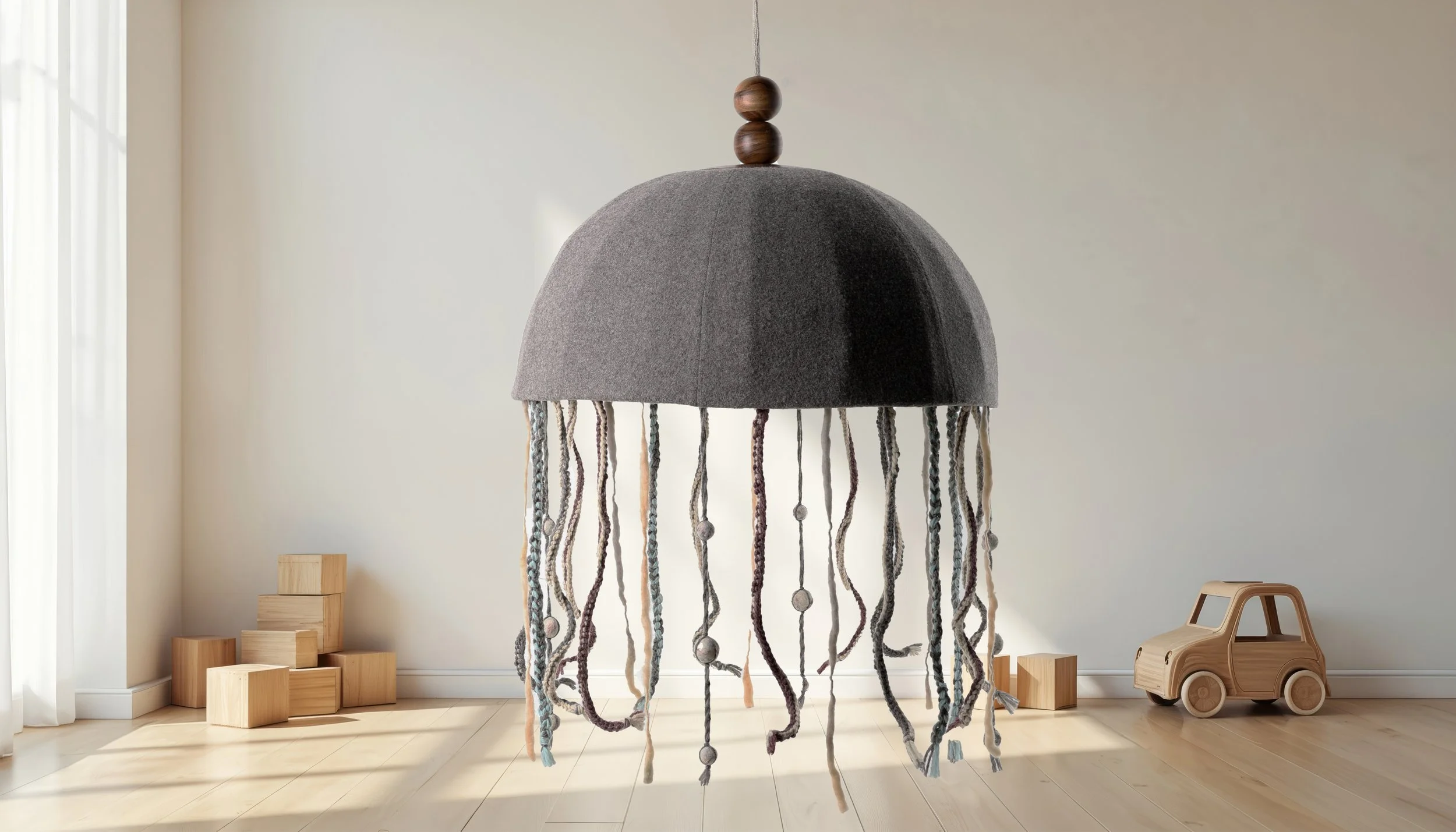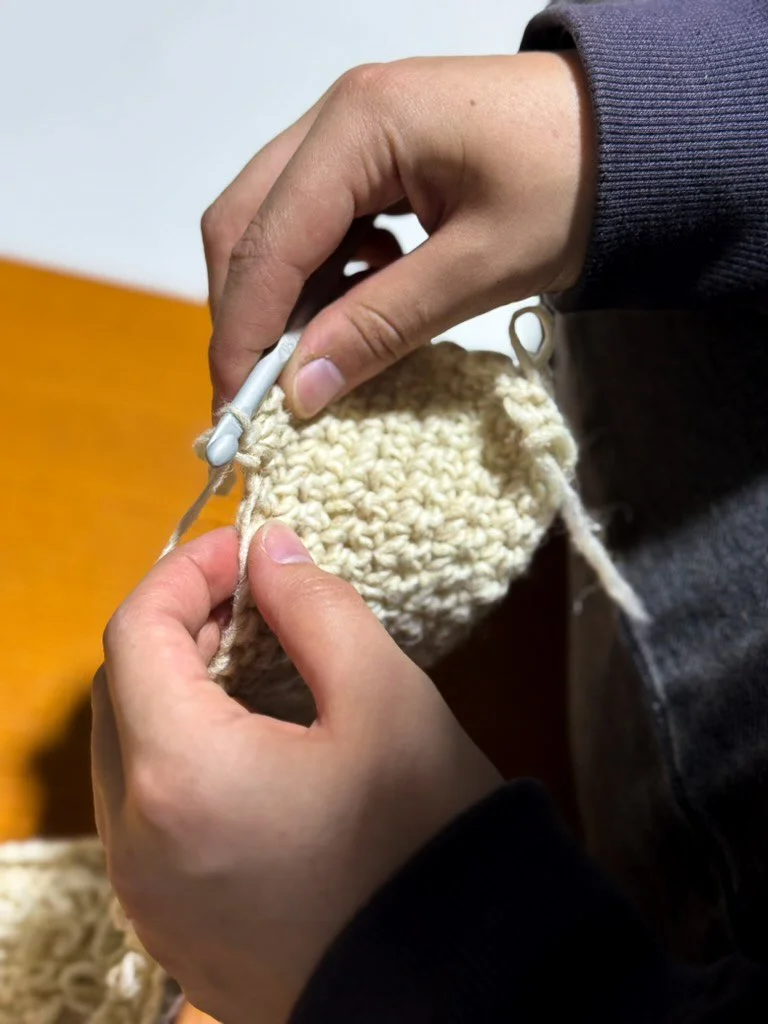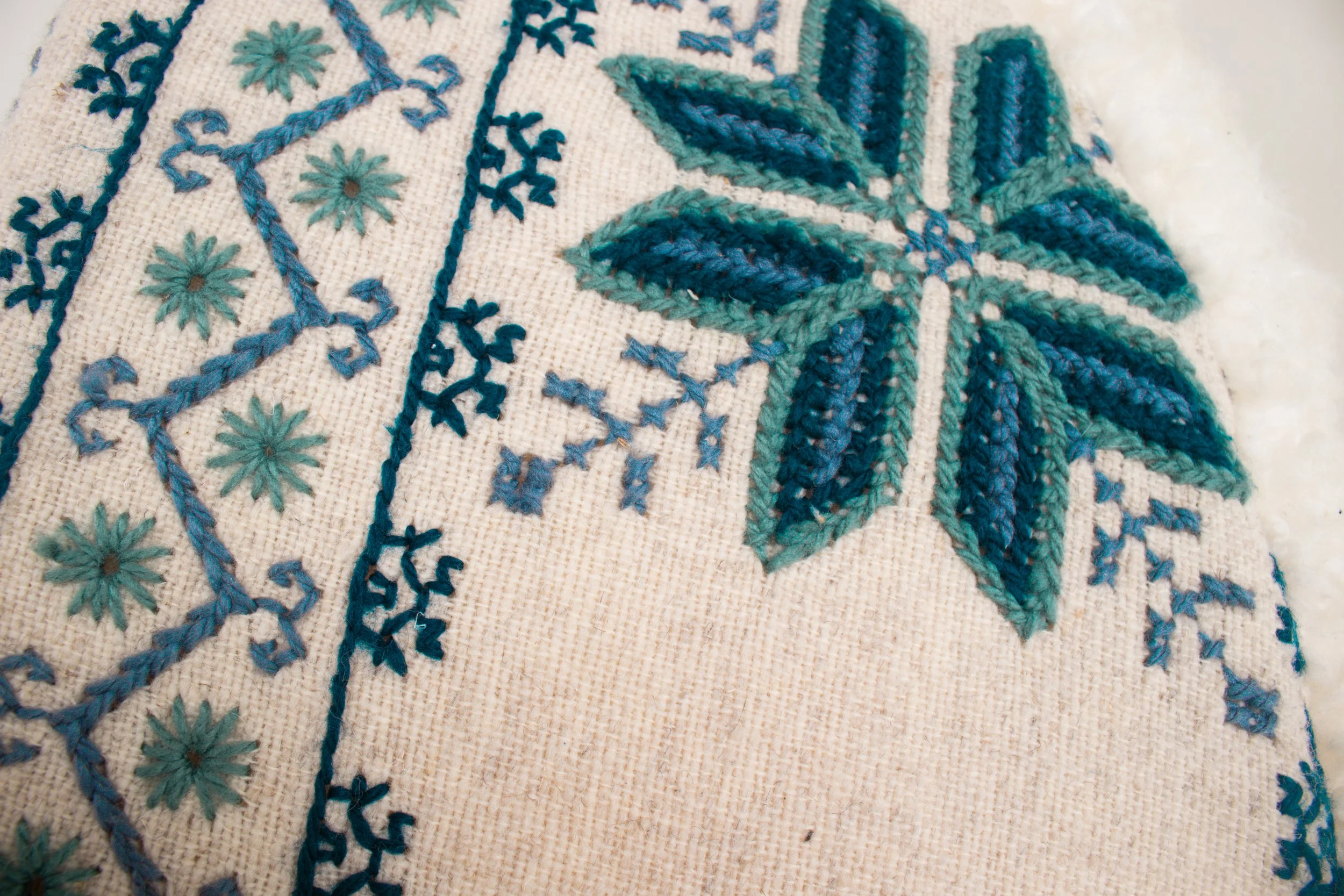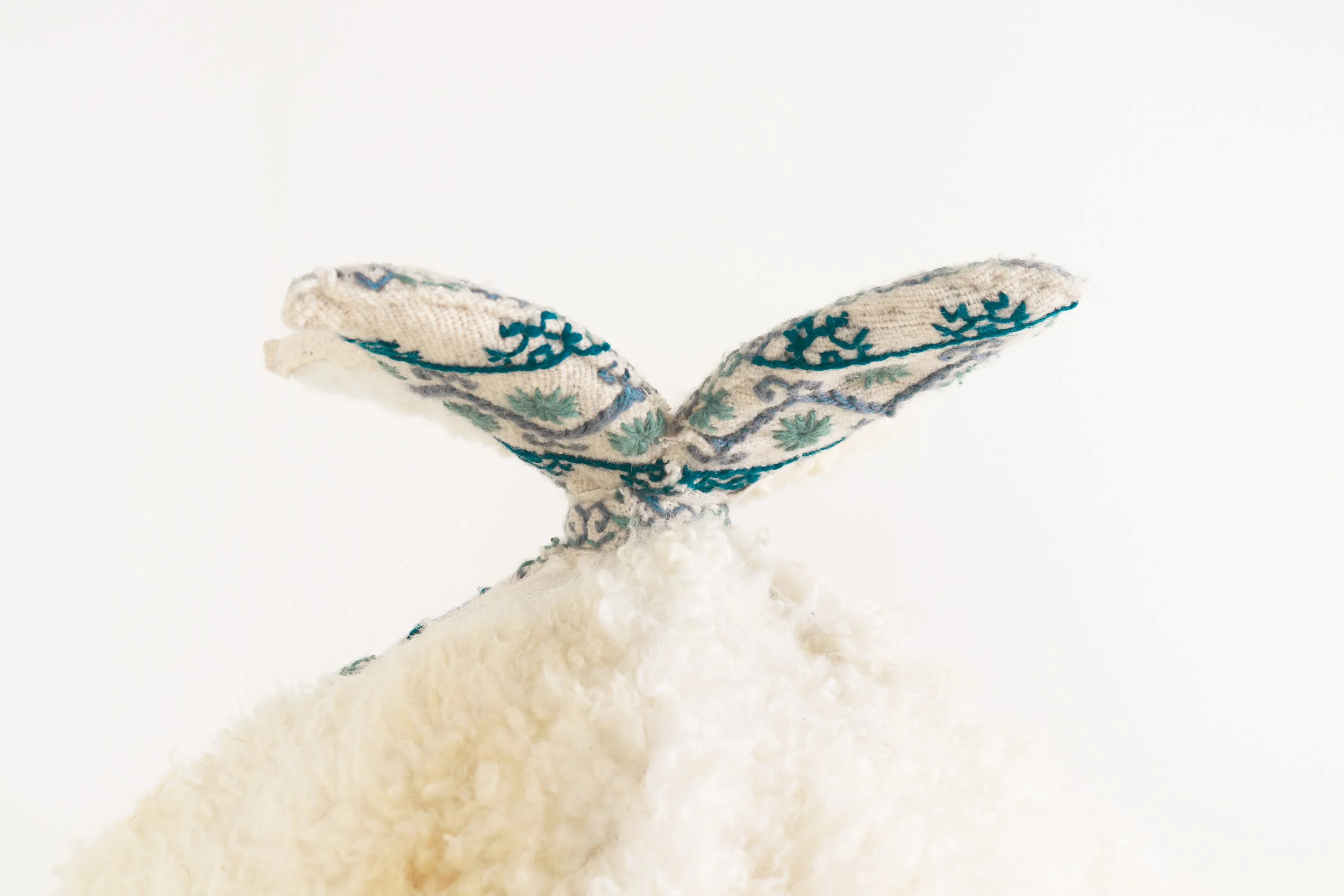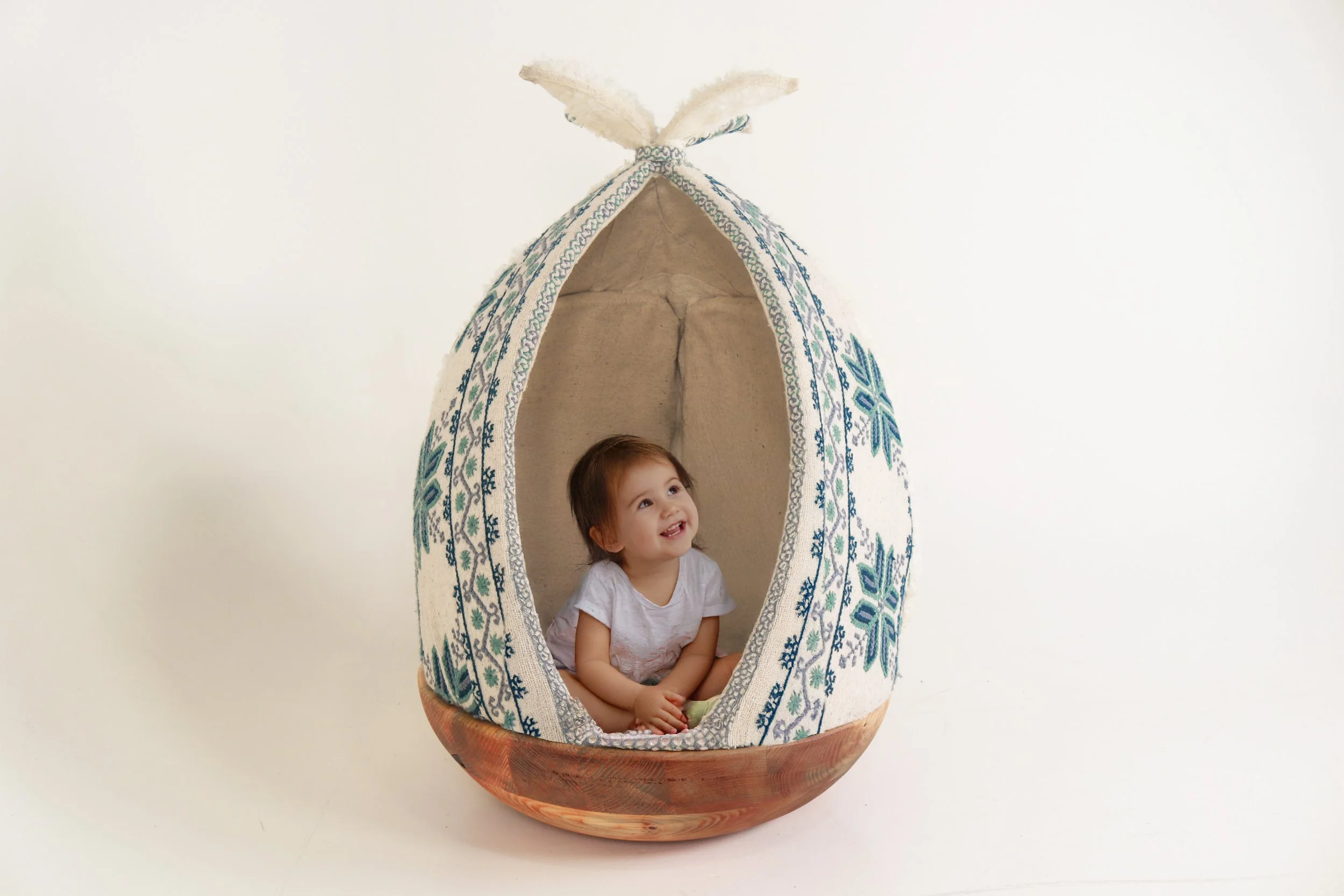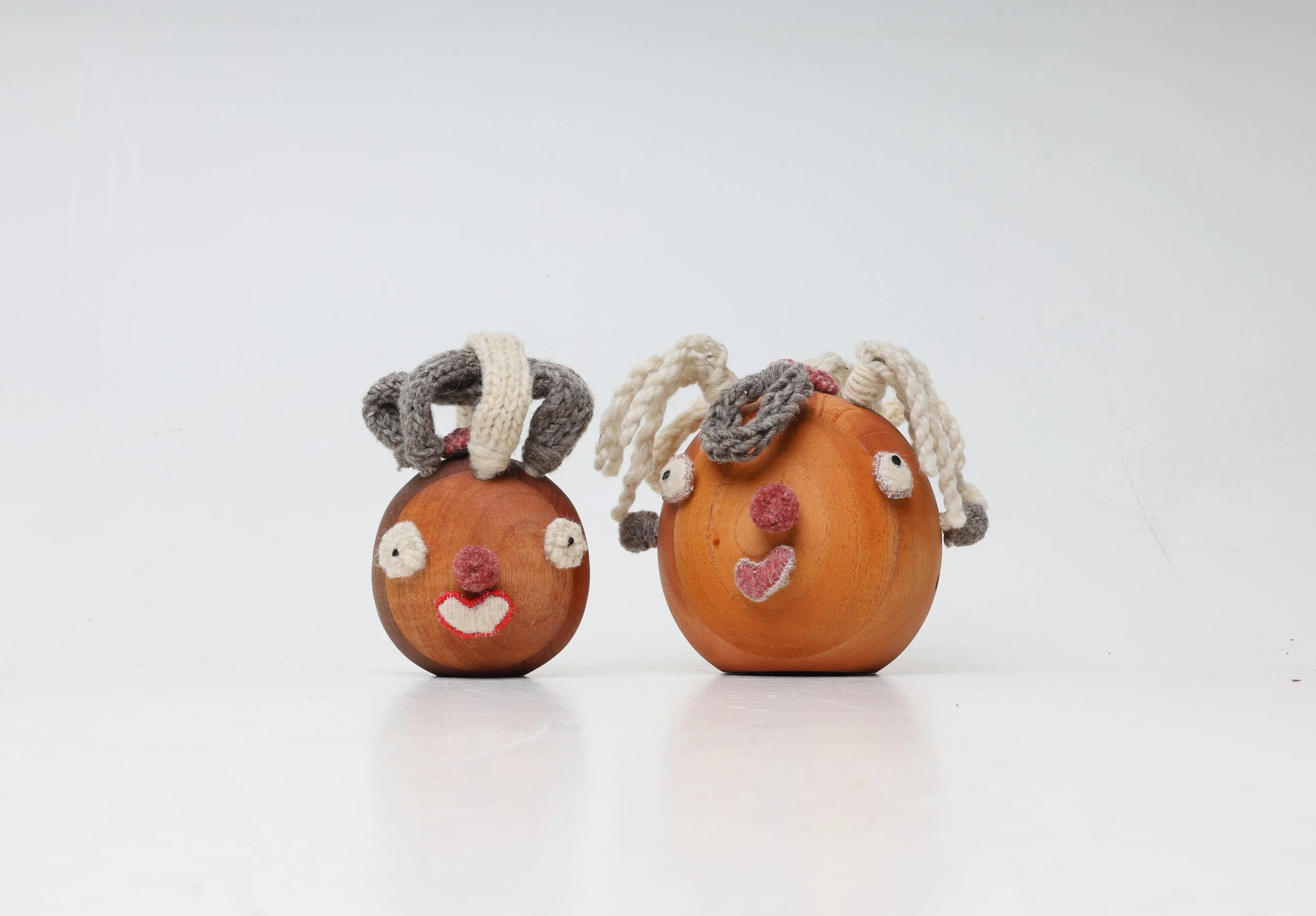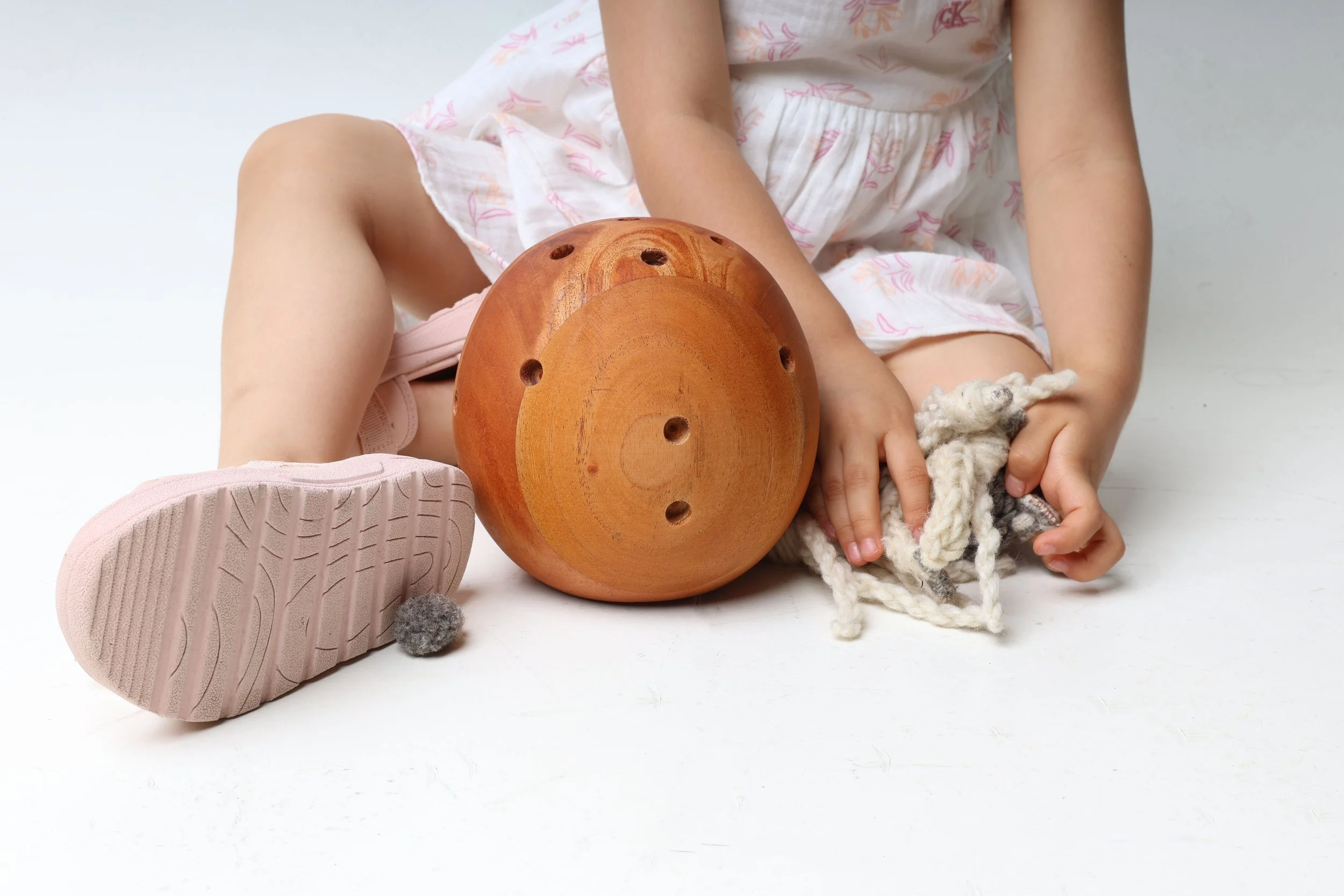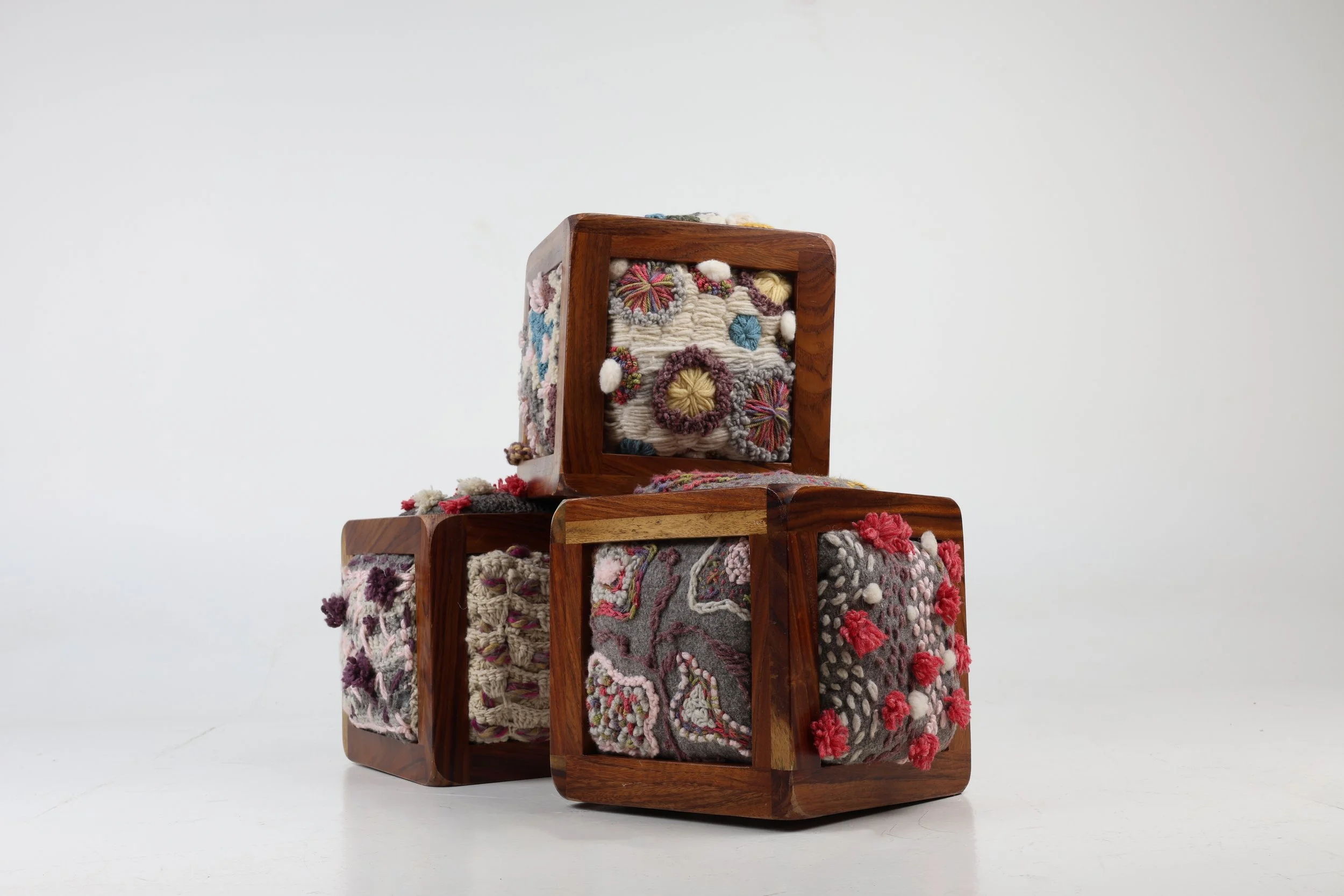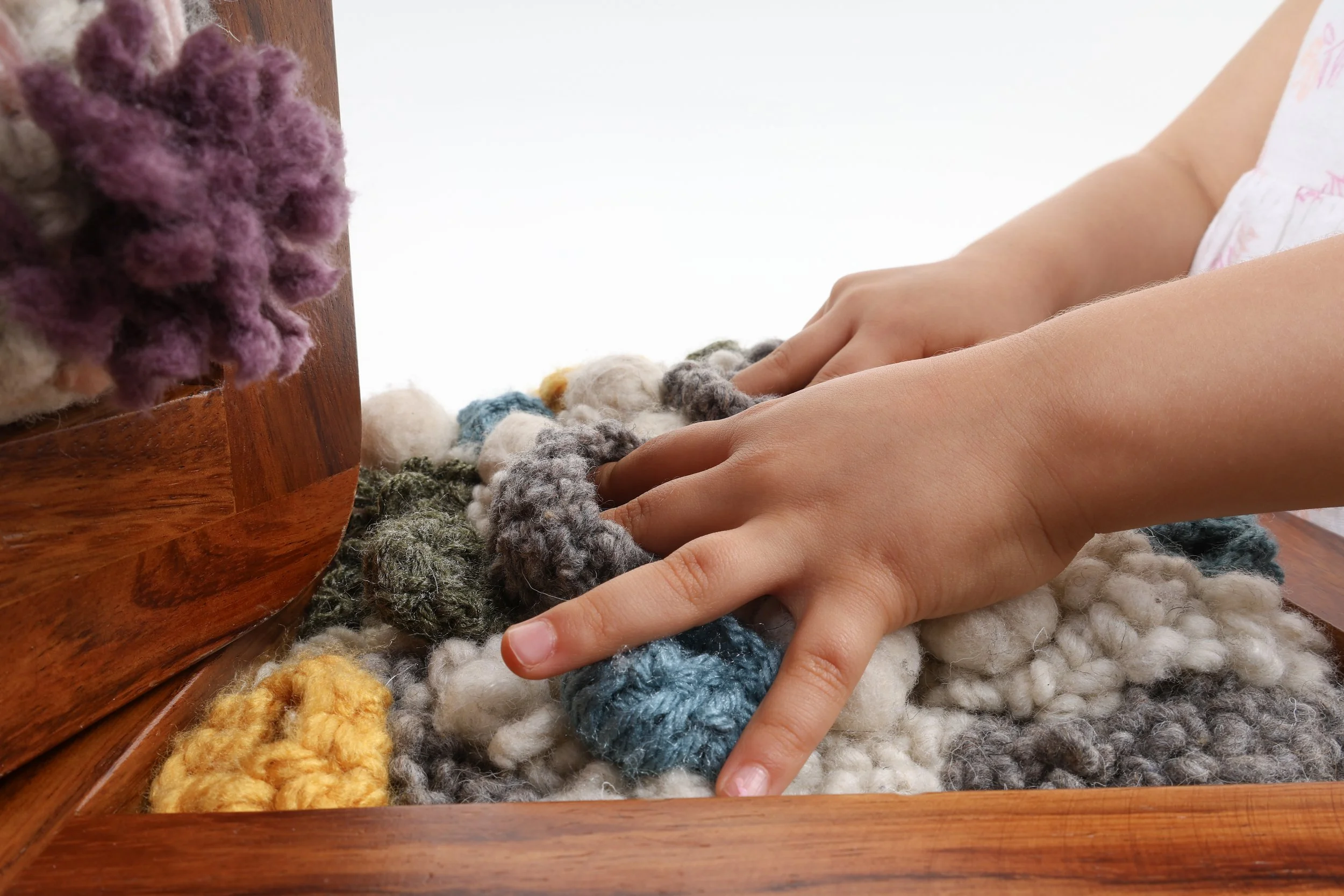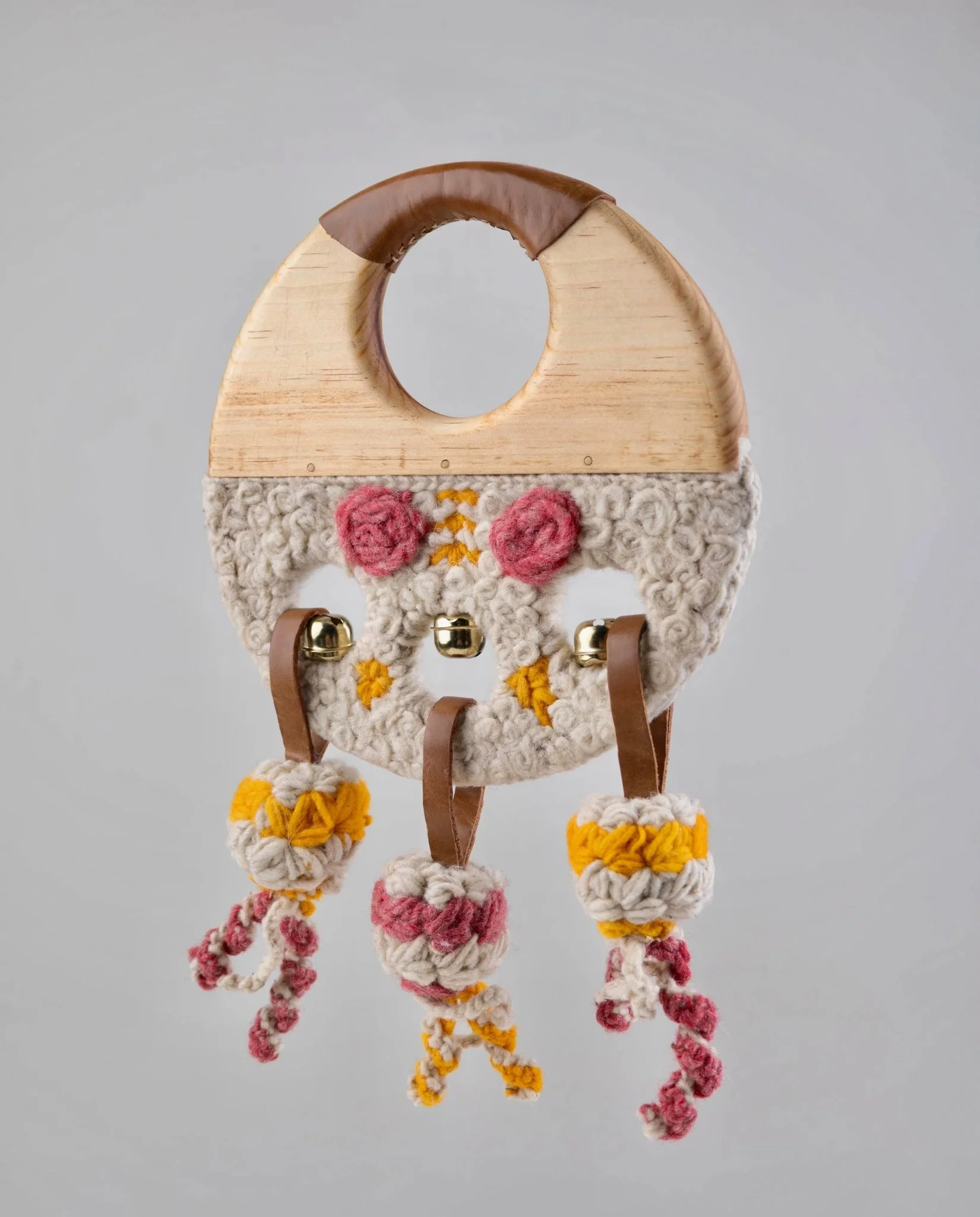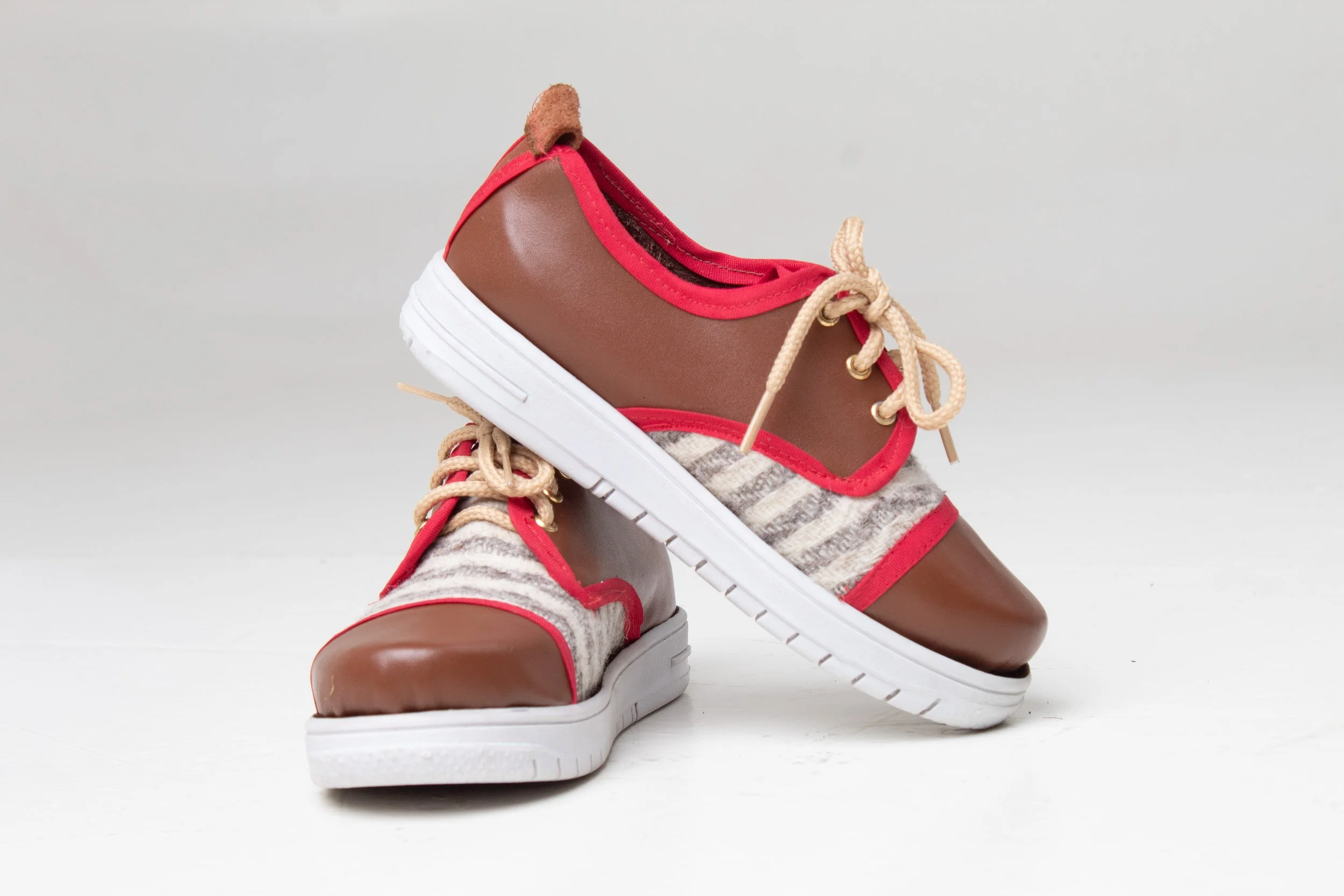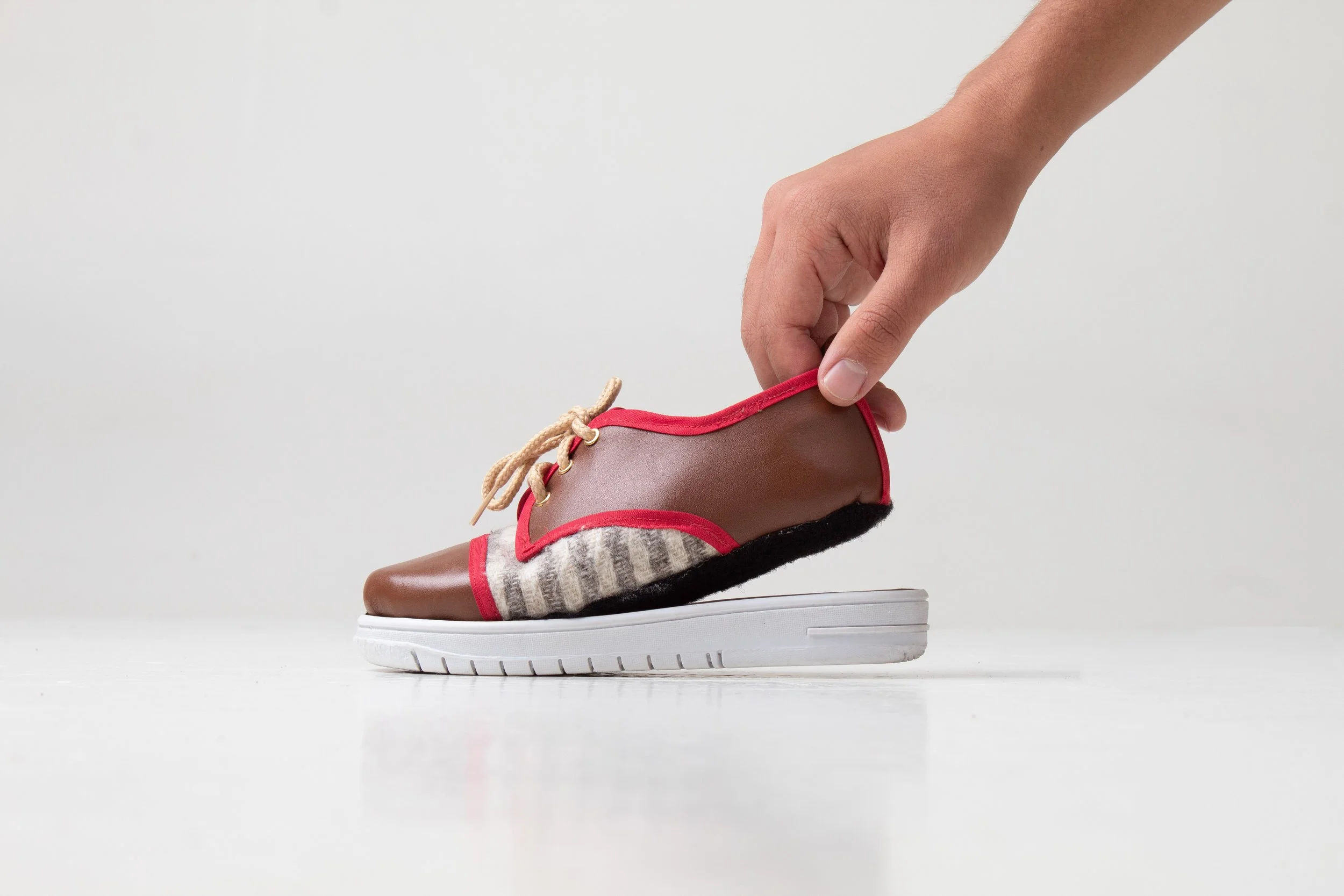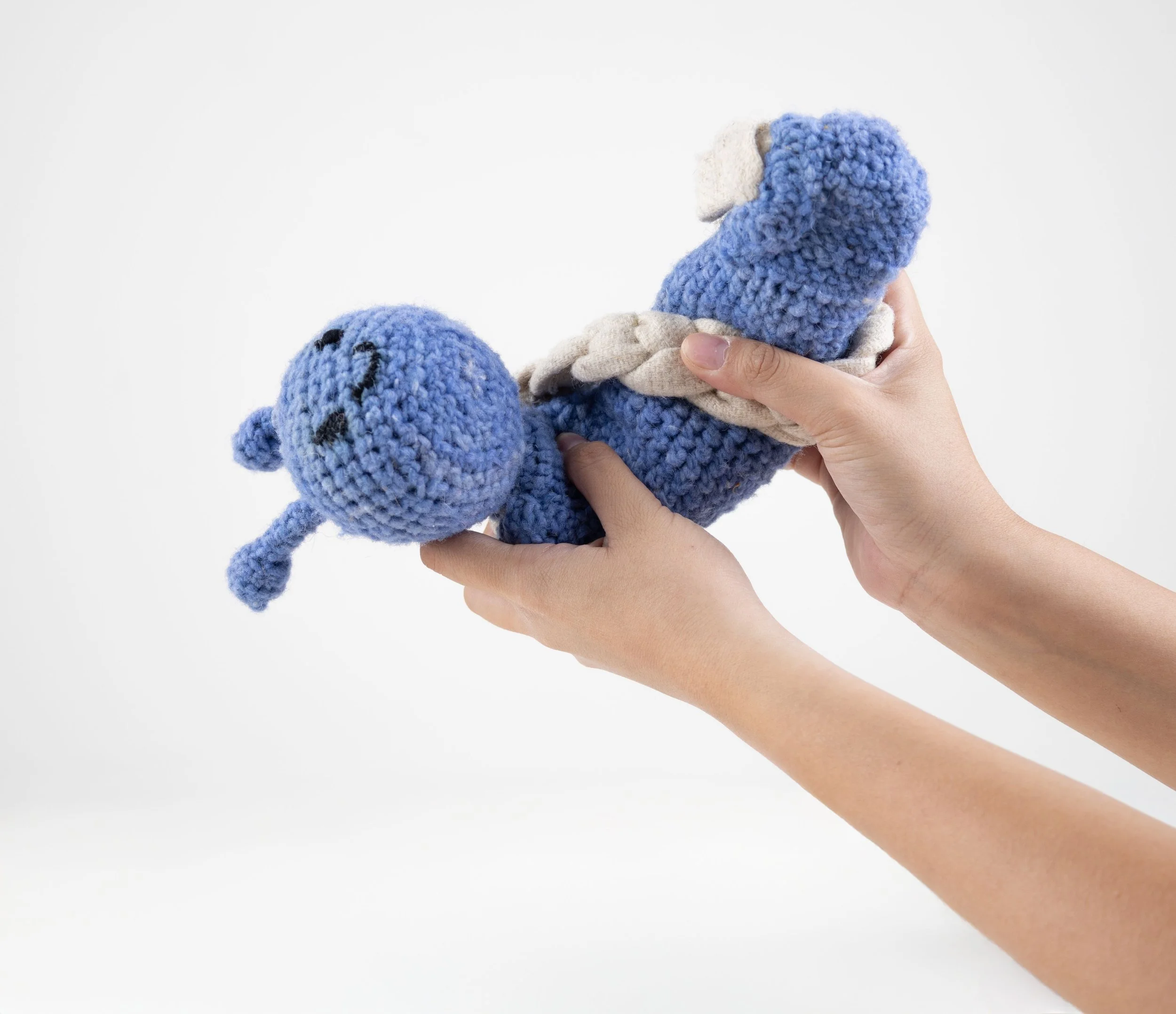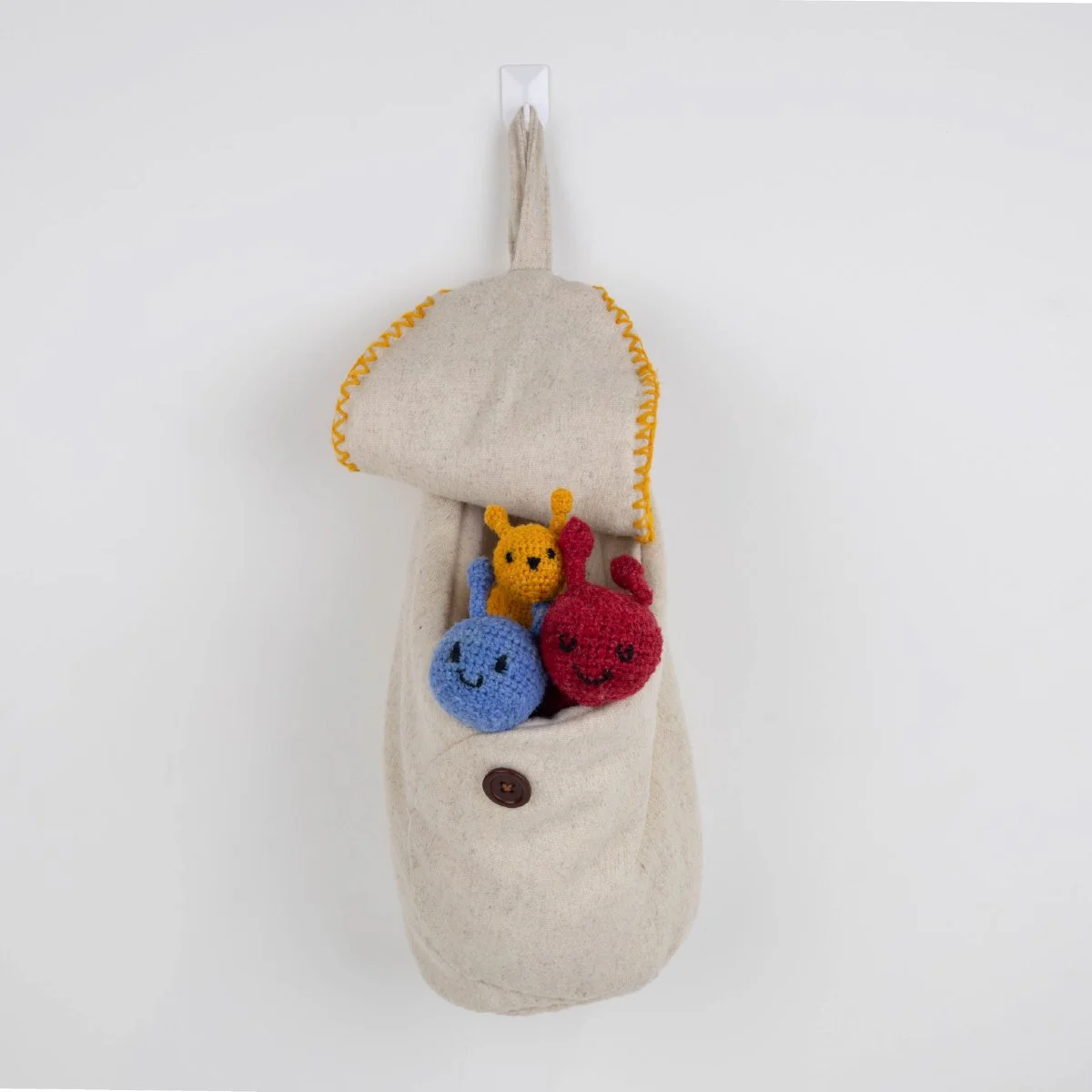ART-OBJECT CHALLENGE (TOL)
PROFESSORS: ESKA ELENA SOLANO, ANDREA ZELAYA, JOEL OLGUÍN, NEYLA SALDAÑA
LANA SUBE, LANA BAJA
Fourth semester design students presents 17 pieces made of wool using techniques such as loom weaving, felting, and pressed wool. The objects are grouped into four themes: play, learrning, children’s furniture, and footwear. They aim to connect children with craft legacy, stimulating imagination, exploration, and the discovery of natural materials steeped in history, celebrating the bond between contemporary design and ancestral knowledge.
WOB
Valentina Azum Sánchez
A sensor play space crafted to spark imagination, storytelling, and open-ended play for children age 3 to 6. At its heart is a dome made from natural wool and parota wood, creating an inviting refuge. Inside, soft wool figures can be hung, moved and rearranged, becoming characters or objects in ever-changing stories. This interaction encourages fine motor skills while nurturing emotional and cognitive growth.
YOHU
Constanza Scalona
Yohu is a soft nest where the small body finds shelter, and the growing soul, calm. Inspired by the protection of the maternal womb, it is born as a gesture of love made form: gentle, enveloping, safe. Made of wool, wood, and warm, living materials, Yohu is more than furniture: it is a first emotional refuge, where care becomes tangible and design embraces. Designed to accompany the early years with tenderness, sustainability, and respect, Yohu grows with them, supporting their search for balance, autonomy, and affection.
Lanitos
Camila Azul Sol García
Playful decorative object designed to foster creativity and imagination in children aged 7 to 9, through the creation of characters. The object consists of two spheres with interchangeable parts, allowing for multiple combinations.
Each element has been handcrafted using turned mahogany wood and textile details presented in two forms: pressed wool and skeins of wool yarn crocheted by hand. These materials bring uniqueness to each piece while revaluing the meaningful and aesthetic qualities of artisanal production.
CUKOS
Valentina Rodríguez Alarcón
A sensory universe made of wool. This set of multifunctional woven cubes is designed to awaken tactile curiosity, constructive imagination, and spatial awareness through open-ended play for children aged 4 to 7. Each side presents a different texture, crafted using both traditional and experimental techniques, creating a stimulating and safe environment to explore shapes, structures, and emotions.
Each element functions as a lightweight seat, thoughtfully designed to accompany children in moments of rest, play, or contemplation. Stackable, combinable, and soft to the touch, these modules transform into spaces that invite creation, inhabiting, and feeling.
Toto ritmo
Mayte Enríquez Arizmendi
This object is inspired by a tambourine, designed as an educational, sensory, and cultural object. It is designed to stimulate hearing and touch in early childhood. Its lightweight structure makes it easy to handle. The wool softens the contact and adds warmth. Each material was chosen for its natural origin and symbolic value: wood connects with the earth, wool with care and tradition. It not only generates sound, but also invites play, explores rhythms, and keeps the connection with artisanal roots and popular music alive.
Dähi
Luis Alejandro Suárez
Crafted from pressed wool—a thermal, lightweight, and moldable material—this footwear incorporates leather reinforcements that protect the toe, heel, and instep. Its modular sole can be adapted to different environments: a lighter version for indoor settings and a more durable one for outdoor use. Developed in collaboration with local artisans, the project merges traditional techniques with functional design, supporting the everyday movement of children aged 3 to 5.
ORUGUIRIS
Liliana Lemus Oseguera
The “Oruguiris” project introduces a family of caterpillars that, through sensory stimulation, promotes creativity, imagination, and motor skills in early childhood. Felting and crochet techniques were used to create a multisensory object: felting invites tactile interaction and helps develop fine motor skills, while crochet provides soft and accessible forms. The cocoon, made of pressed woolen fabric, conveys a sense of protection and warmth. As they emerge, the Oruguiris invite children to explore a world of color, play, and discovery.


